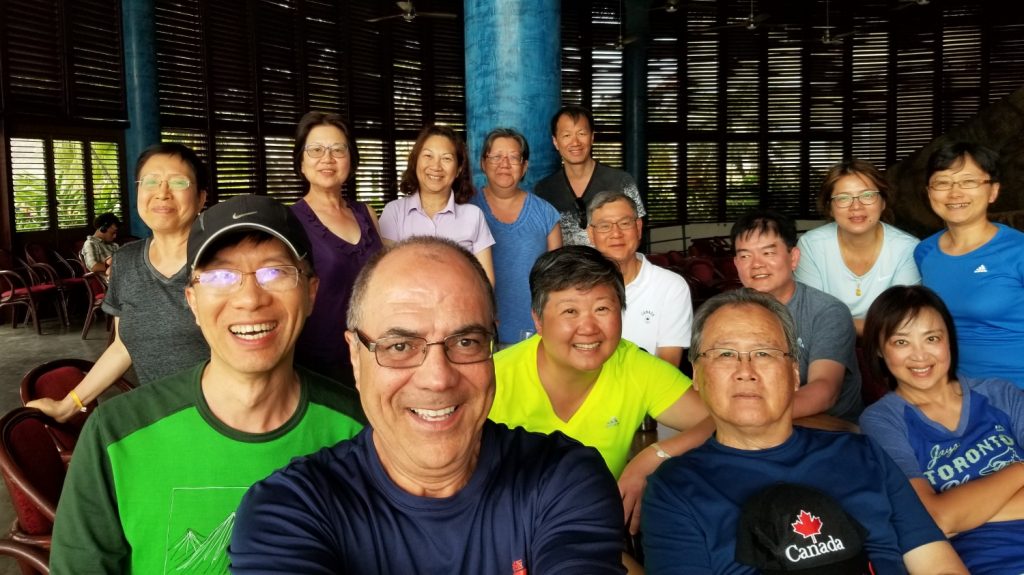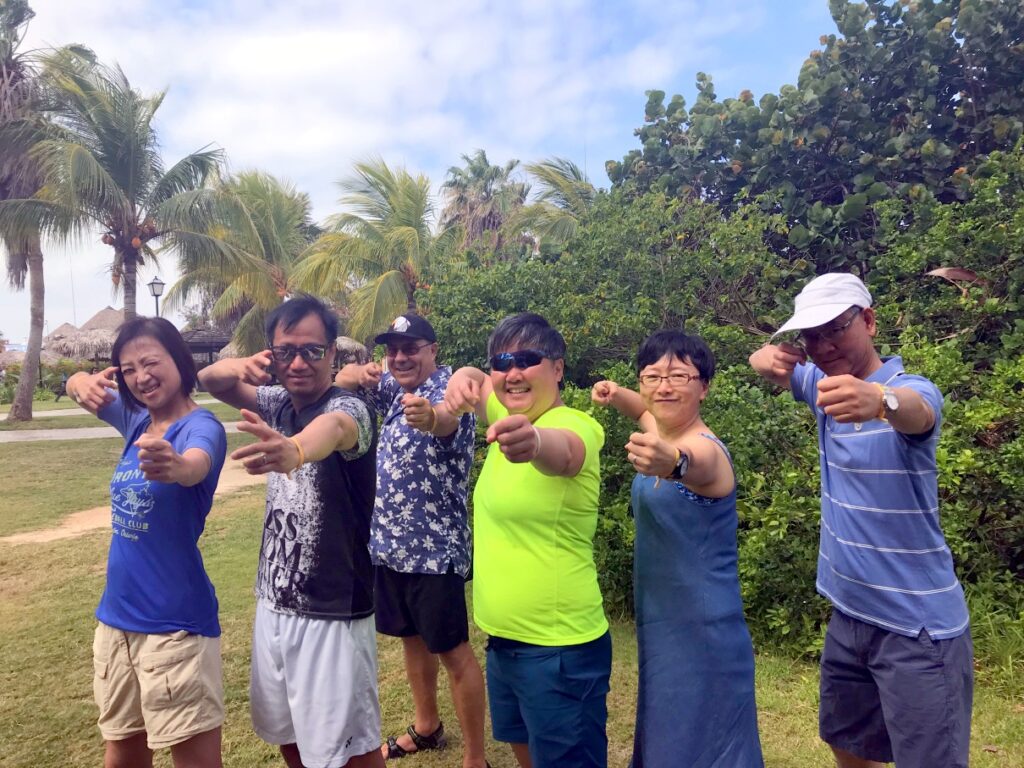Recently, the students of Ji Hong Tai Chi Richmond Hill and Ji Hong Tai Chi Mississauga attended a Tai Chi Retreat together in Cuba. Not only did we have a fabulous time together but we were treated to Chief Master Instructor Baosen Liang’s generous insights on the foundational theories of tai chi. These foundational concepts help us achieve the goal of being One with Nature within the practice of tai chi.

It was an eye-opening experience for many of us at the retreat and most of us can’t wait for the next annual retreat. We cherished both the camaraderie that we all experienced together but also the thought provoking talks and interactive discussions about the inner art of tai chi.

Here, we’re sharing the fun photos of our time together as well as a summary of those insights gained during our great Tai Chi Retreat in Cuba.

The Foundational Theories of Tai Chi
There are two main theories to which tai chi is intricately connected. Understanding these two theories will deepen our understanding of tai chi.
The two theories:
- Yin/Yang (陰陽; yīnyáng) and
- Wu Xing (五行; wǔxíng) or Five Elements
Not only are these two theories key to tai chi but they are core concepts of ancient Chinese culture and philosophy.
The Concept of Yin/Yang
The Taijiquan Treatise, a piece of classic Tai Chi literature written by Wang Zong Yue (王宗岳), starts off with this sentence: “Taiji is born of limitless, the mother of yin and yang”. According to traditional Chinese thought, in the beginning was an empty but infinitely potential nothingness (無極; wújí; meaning no boundaries). From that came Tai Chi (太極; tàijí; meaning supreme ultimate), which then gave rise to Yin and Yang.
Yin and Yang is the concept of dualism in ancient Chinese philosophy. Yin and Yang can be interpreted as various opposing concepts such as: action / non-action, fast / slow, hard / soft, front / back, left / right, inner / outer.

The concept of yin and yang describes how seemingly opposite or contrary forces may actually be complementary, interconnected and interdependent in the natural world. They are seemingly opposites, but co-exist and may give rise to each other as much as they interrelate to one another.
We need to understand Tai Chi in light of these paradoxical concepts. The more we practice tai chi, the more we will witness these concepts in motion and understand yin and yang through tai chi.
The Concept of the Five Elements
The Five Elements in Chinese philosophy are: Earth (土 tǔ), Wood (木 mù), Metal (金 jīn), Water (水 shuǐ) and Fire (火 huǒ),. For the first time in the martial arts world, Sifu Liang has incorporated the concepts of Five Elements into Tai Chi practice.

Earth
Earth represents the ground that we stand on. We cannot escape from Earth’s gravity, so we need to establish a good relationship with earth. Our body needs to work with gravity, not against it. Good posture, balance and relaxation are all key aspects of the Tai Chi stance. Achieving a grounded stance means we’re successfully incorporating the Earth element into our tai chi practice.
Wood
The Wood element represents the tree with our body being the tree trunk, legs being the roots, and the arms as branches. To master the Wood element, our legs must be rooted deeply into the ground making it difficult for us to be pushed or blown over. The trunk is solid and thick enough to support the branches or arms extending from the trunk.
The tree analogy mirrors the accomplished tai chi practitioner’s ability to hold the 5 bows of the body’s core structure without allowing the arm bow or branch to break. As strong as tree branches may be, they are also supple enough to survive strong winds. When we master the Wood element of tai chi, we are both able to maintain the structure of our pose without breaking when heavy winds blow or strong external forces are applied.

Metal
In the Chinese language, the word “Gold” is used to represent metal. The intent of that characterization is to define it as a pure, concentrated and precious metal. In practicing Tai Chi, we want our dantian (丹田) to be like Gold, a highly concentrated and critical source of energy or Qi. As the Chinese saying goes “True Gold fears no Fire” (真金不怕火燒) so a strong and focused dantian is central to improving movement and stability skills.
Water
The first three elements represent static states within tai chi. We want to master these first three elements before we start training for advanced elements of movement. The Water element represents the quality of movement that we want to achieve.
When we look at the characteristics of Water, here’s what we witness:
- Water is soft and has no stiff points.
- Water flows and it flows downward with gravity towards Earth.
- Water does not fight with obstacles. Instead, water just flows around obstacles.
It is high praise for us to say that a tai chi master “moves like water” when their movements embody all of these characteristics representing the water element.

Fire
When all of the first 4 elements are attained to a level of proficiency, then the “Fire” element will begin to appear in our tai chi practice. The Fire element represents the existence of a demeanor or presence which others can feel or experience. Just like fire, this element represents something which is intangible and has no physical form. Yet, we can feel its presence and influence.
As we advance with our tai chi training, our demeanor grows towards an increasingly imposing demeanor described as poise and authority with a potency and vigor matching our Qi or energy level. Our audience or opponents can experience our Fire element as they witness a form or engage us in a Push Hands interaction. The Fire element is achieved only with years of diligent practice and mastery of the Five Elements.

One with Nature (天人合一; tiān rén hé yī )
The philosophy of “Unity of Heaven and Man” or “One with Nature” originates from Taoism. “Heaven” in this context represents rules of nature. The Unity of Heaven and Man means man must follow the rules of nature. Only when we do this can our bodies achieve harmony and homeostasis.
Yin/Yang and the Five Elements are all part of nature in Chinese philosophy. Everything in nature has both yin/yang and everything in nature can be categorized as one of the Five Elements. As we practice Tai Chi with the concepts of Yin/Yang and the Five Elements in mind, we are moving towards being One with Nature.
To experience and discover these concepts of Tai Chi, join any of the advanced training classes. Our master instructors will explain, demonstrate and help you understand how to embody these elements into your tai chi practice.
Co-authored by Baosen Liang, Charlmane Wong and May Rahnema



